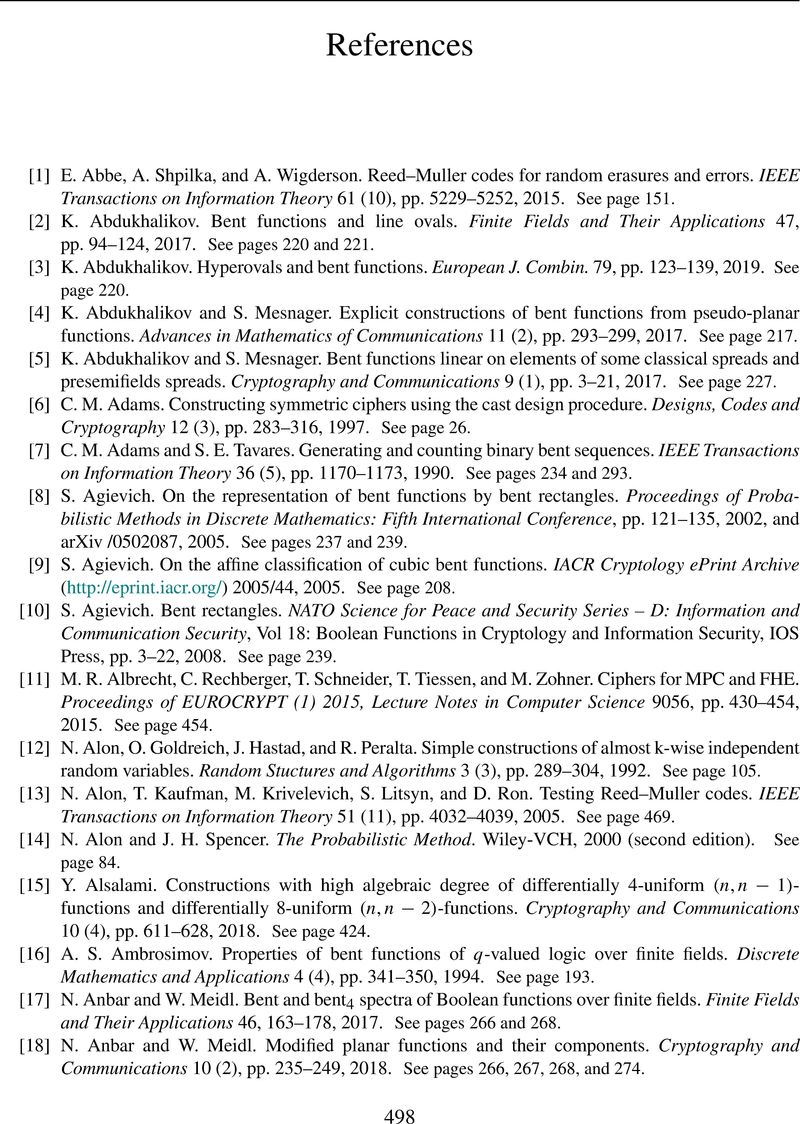Book contents
- Frontmatter
- Contents
- Preface
- Acknowledgements
- Notation
- 1 Introduction to cryptography, codes, Boolean, and vectorial functions
- 2 Generalities on Boolean and vectorial functions
- 3 Boolean functions, vectorial functions, and cryptography
- 4 Boolean functions, vectorial functions, and error-correcting codes
- 5 Functions with weights, Walsh spectra, and nonlinearities easier to study
- 6 Bent functions and plateaued functions
- 7 Correlation immune and resilient functions
- 8 Functions satisfying SAC, PC, and EPC, or having good GAC
- 9 Algebraic immune functions
- 10 Particular classes of Boolean functions
- 11 Highly nonlinear vectorial functions with low differential uniformity
- 12 Recent uses of Boolean and vectorial functions and related problems
- 13 Open questions
- 14 Appendix: finite fields
- References
- Index
- References
References
Published online by Cambridge University Press: 31 October 2020
- Frontmatter
- Contents
- Preface
- Acknowledgements
- Notation
- 1 Introduction to cryptography, codes, Boolean, and vectorial functions
- 2 Generalities on Boolean and vectorial functions
- 3 Boolean functions, vectorial functions, and cryptography
- 4 Boolean functions, vectorial functions, and error-correcting codes
- 5 Functions with weights, Walsh spectra, and nonlinearities easier to study
- 6 Bent functions and plateaued functions
- 7 Correlation immune and resilient functions
- 8 Functions satisfying SAC, PC, and EPC, or having good GAC
- 9 Algebraic immune functions
- 10 Particular classes of Boolean functions
- 11 Highly nonlinear vectorial functions with low differential uniformity
- 12 Recent uses of Boolean and vectorial functions and related problems
- 13 Open questions
- 14 Appendix: finite fields
- References
- Index
- References
Summary

Information
- Type
- Chapter
- Information
- Boolean Functions for Cryptography and Coding Theory , pp. 498 - 556Publisher: Cambridge University PressPrint publication year: 2021
